Planting winter garlic
Most summer residents grow garlic on their backyard plot. This vegetable culture has found application not only in cooking, but also in medicine. By adding garlic as a fragrant seasoning to food, you not only improve its taste, but also improve the health of the whole body.
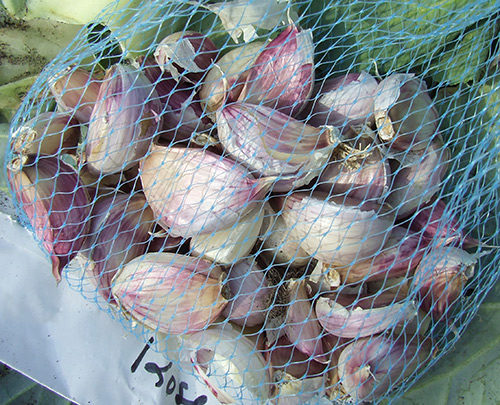
Useful properties of garlic
Garlic contains unique sulfur compounds, active volatile components - phytoncides, a whole range of vitamins and minerals, antioxidants, essential oils, dietary fiber, organic acids and other biologically active phytonutrients. In folk medicine, many ailments are treated with garlic: acute respiratory infections, acute respiratory viral infections, helminthic invasions, atherosclerosis, flatulence, dysbiosis, insomnia, neuroses, fungal diseases, herpes, bronchitis, purulent wounds, acne, alopecia, pneumonia.
Even the ancient Greek philosopher and mathematician Pythagoras called garlic “the king of spices”. It is added to many hot dishes, borscht, soups, roasts, minced meat, stews, salads. Spicy bulbs emphasize the taste of mushrooms, game, poultry, meat, cheeses, sausages, bacon, vegetables. In most world cuisines, garlic rightfully occupies a leading position among aromatic hot spices.
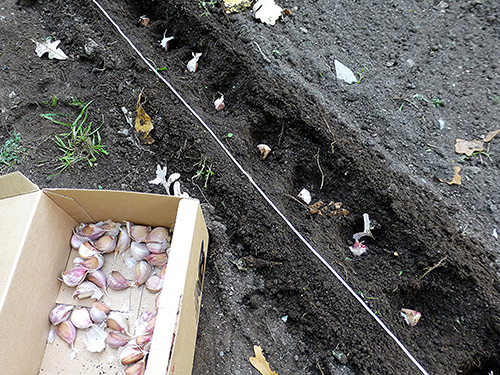
Difference between winter and spring garlic
There are winter and spring varieties of garlic. The difference between them is that the first species is planted before winter, and the second - in early spring. Winter varieties are shooters (during the growing season they throw out an arrow with inflorescences on which air bulbs ripen, used as planting material) and non-shooted. Spring varieties do not shoot.
The yield of winter garlic is slightly higher than that of spring garlic. The number of cloves in the bulb is less, but their size is much larger. Juicy large heads of winter garlic are fully ripe by mid-summer. The crop is most often harvested in July. Spring garlic ripens towards the end of summer. The only drawback of winter garlic, according to most gardeners, is its keeping quality. Garlic can be preserved without losses only until the new year, while spring varieties do not dry out and do not deteriorate until the beginning of summer.
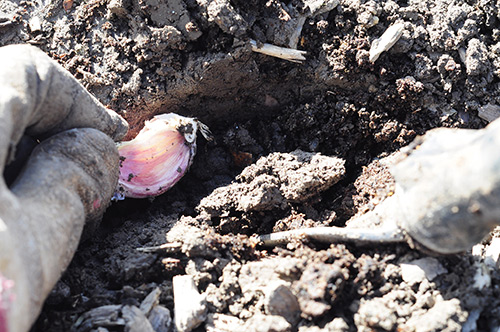
Choosing a site for planting garlic
Garlic beds should be set up in a place well warmed by the sun's rays without shading. You can not plant a crop in lowlands and places where melt water accumulates. Areas where groundwater is close to the surface of the earth are also not suitable for garlic, since the bulbs in such places simply rot. The soil for garlic should be highly fertile, well structured and have neutral acidity. If the land on your site is acidic, then you should take measures to alkalize it by adding dolomite flour, lime-fluff or wood ash.
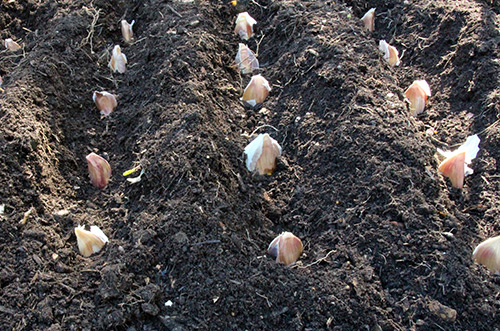
The best precursors of garlic
Garlic reacts well to soils seasoned with fresh manure under the previous culture, for example, under plants of the pumpkin family - cucumber, zucchini, pumpkin. Green manures, legumes, early cabbage and potatoes are also considered acceptable precursors. It is undesirable to sow garlic after onions (it can be returned to its original place after 4 - 5 years), since they also have common diseases and pests. After leafy greens and carrots, garlic is also not worth planting.
Preparing the beds
The beds should be dug up after harvesting the previous crop and filled with high-quality organic matter and minerals, to which garlic is very responsive. Fresh manure for garlic should not be applied, since this type of fertilizer significantly slows down the growth of the bulbs and can lead to their rotting.
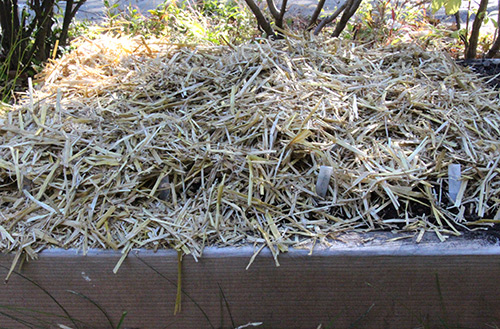
Under the garlic, humus (well-rotted manure), peat with neutral acidity, and matured compost are placed in the soil. From mineral fertilizers add phosphorus-potassium (potassium magnesium, potassium salt, superphosphate, bone meal). Wood and plant ash is also considered a valuable source of phosphorus, potassium and calcium.Prepared beds should be drilled, making furrows at a distance of 20 cm from each other.
Winter garlic planting procedure
Garlic should be sown in such a way that 30 - 40 days remain before the onset of soil frosts. During this period, the cloves have time to root efficiently, but do not germinate in order to hibernate with a powerful root system. In the middle lane, garlic is planted from late September to late October. Be sure to take into account the weather conditions of the current fall and the long-term forecast of weather forecasters.
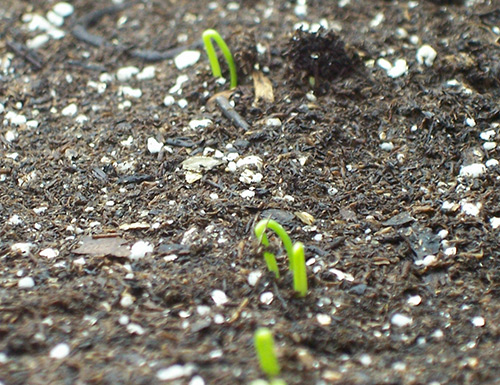
Only large heads with intact integumentary husks are suitable for planting. At the slightest sign of disease (spots, dents, rot) or mechanical damage, the planting material is rejected. It is advisable to disinfect the cloves before planting by soaking them for 15 minutes in a low-borne solution of potassium permanganate (potassium permanganate) or a low-salt solution (a tablespoon of sodium chloride per liter of pure water).
Planting depth is from 5 to 7 cm. At a shallower depth, cloves of winter garlic risk freezing out in severe frosts and snowless winters. The distance in the row between the cloves is about 10 cm (this is the gap that allows the plants to grow organically without interfering with each other). It is more convenient to make holes using a stick with a limiter. One clove is laid in each hole, and then covered with earth. Watering the beds is necessary if the soil is dry.
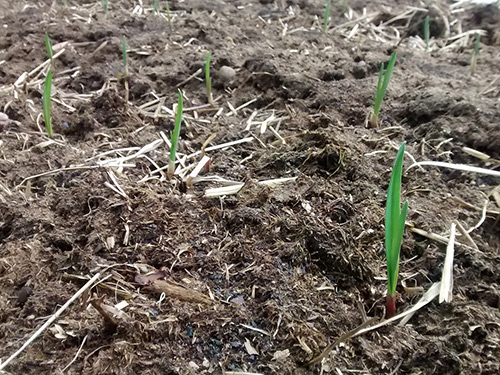
Mulching the beds
After planting, the beds must be mulched. A 10-centimeter layer of mulch will prevent the planting material from freezing in the harsh winter, and after decomposition will fill the soil with additional plant nutrients. The best covering material is considered to be humus, compost, straw, large sawdust.
If in your region the winter temperature often drops below minus 10 ° C, then it is better to make additional insulation of the beds with the help of coarse mulch, as which it is advisable to use spruce or pine spruce branches, large branches cut from trees. The second layer will not only insulate the soil, but also contribute to the delay in the beds of snow, which, after the spring thaw, will saturate the soil with valuable moisture. Immediately after the snow melts in early spring, the top layer of mulch is removed.
Observing the basic agrotechnical techniques for the cultivation of garlic, you can get an excellent crop harvest and enjoy the juicy large heads of winter garlic next summer, using it for food and summer-autumn preparations for the winter (salting, pickling). Have a nice harvest!
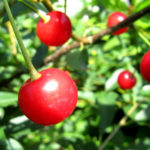

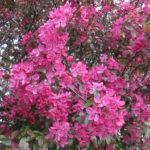
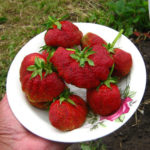
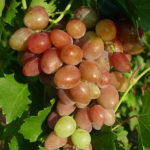
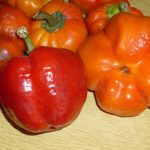



The most important thing in planting winter garlic is to use only healthy heads so that there is not a single sign of any disease at all. If you miss it, you can say goodbye to most of the harvest. It is also advisable to etch the head with fungicidal agents - Maxim or Fundazol before planting. As I noticed, garlic is not afraid of small frosts up to -3 degrees, nothing happens to its shoots. But it is advisable to plant in the fall so that it only takes root before frost, but does not germinate. Then he is not afraid of frost. It is also advisable to add a little superphosphate to the hole when planting.
At the dacha, I experimented a lot with planting garlic in the fall, even went so far as to plant a Chinese garlic bought in a store for the sake of experiment. The average weight of a clove was 10 g. Its main thing to plant is very late - it rises very quickly and for the first time left in winter with 10 cm of leaves. But the most interesting thing is that about 80% were not frozen out.It ripened by the end of June, basically there were one-toothed teeth up to 20 g, which I also planted the next year. And what do you think, heads of 130 g grew out of them, and this is just a huge weight for garlic. Now in parallel I grow both one-tooth and large garlic from one-tooth. Many people told me that Chinese garlic will grow small, I believe, but in the first year, in the second year, it just grows gigantic.
It is bad that there is no chemistry that would fight the white rot of garlic, and this is the most dangerous and widespread disease. If disputes are in your land, then all - goodbye to the harvest. However, it can be obtained. I have tried many garlic dressings, but they did little to help with fall planting. The garlic was rotting anyway. For myself, I drew conclusions: it is necessary to plant early ripening varieties in the fall. They have time to mature before the mass spread of the disease. Or plant garlic like spring in the spring. He is less susceptible to this disease and also does not have time to get sick in a season. This is advice to those who have problems with growing, who do not have them, then grow as written in the article.
You cannot plant winter garlic in a lowland, I was convinced of this from my own experience. In the spring, the groundwater rose and a crust of ice formed. Shoots turned yellow, growth slowed down. As a result, they did not get a crop. When planting in the ground, I bring in humus and ash, and mulch with sawdust on top. In the spring, when shoots appear, I sprinkle the garden with salt and water it abundantly so that the salt is absorbed. After this treatment, the feathers will not turn yellow and dry. When the garlic starts throwing out arrows, I cut them off.
Autumn this year is warm, the sprouts have already made their way, so you will have to cover it with straw so as not to freeze. I clean in dry weather, store in a cardboard box in a cool place.